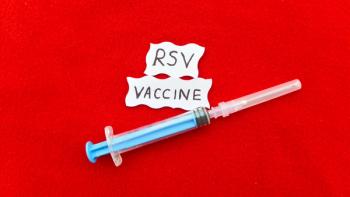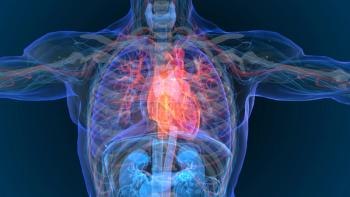
Physical Activity Can Improve Quality of Life in Patients With Newly Diagnosed Multiple Myeloma
Key Takeaways
- Physical activity improved fatigue, depression, and quality of life in NDMM patients, enhancing treatment tolerance and reducing adverse events.
- The exercise group showed better functional outcomes, including improved timed-up-and-go test performance and grip strength.
Physical activity significantly enhanced quality of life and reduced fatigue and depression in patients with newly diagnosed multiple myeloma.
Physical activity can improve fatigue, depression, the ‘timed-up-and-go-test’ (TUGT), grip strength, comorbidities, and quality of life (QoL) in patients with newly diagnosed multiple myeloma (NDMM), according to data from the REAL-FITNESS trial (DRKS00022250).1
MM is the second most common hematologic malignancy, characterized by the overproduction of monoclonal proteins, resulting in anemia, renal failure, and brittle bones. It is an incurable cancer in which patients tend to respond less effectively to each subsequent line of treatment. Poor treatment responses combined with existing MM-related symptoms and comorbidities have significant implications for patients’ functional status and QoL.2,3
Physical activity is essential for promoting and maintaining optimal health and can be beneficial for patients with cancer. However, there is little data on the benefit of physical activity for patients with NDMM and other hematologic malignancies, which led to the initiation of the REAL-FITNESS trial.3
“Especially for MM patients during induction and subsequent treatment, evidence from randomized controlled trials is limited, the authors wrote. “This is unfortunate, because these patients may benefit from PA to better endure physical deconditioning and prevent cachexia, muscle wasting and fatigue, especially because MM treatment is now continuous, rather than time-restricted.”3
REAL-FITNESS was a prospective, monocentric, randomized, controlled trial investigating the effects of physical activity on exercise tolerance, symptoms, and QoL in NDMM patients. Thirty-four patients with NDMM were assigned 1:1 to an exercise arm and a control arm. Those in the exercise arm performed guided muscle-strengthening sessions 2 times a week for 3 months (consistent with World Health Organization recommendations) during induction with bortezomib (Velcade; Millennium Pharmaceuticals, Johnson & Johnson), cyclophosphamide (Cytoxan; Amneal Pharmaceuticals), and dexamethasone (Glensoludex; Glenmark Pharmaceuticals Europe Ltd; VCd). Physical activity was tracked using smartwatches and training diaries.3
The investigators compared demographics, osteolytic lesions, infections, fatigue, and depression between the exercise and control groups, along with biomarkers such as albumin, creatine kinase, C-reactive protein (CRP), high-density lipoprotein (HDL), low-density lipoprotein (LDL), and pro–brain natriuretic peptide (pro-BNP). They also measured VCd treatment tolerance, treatment response, the TUGT, the Revised Myeloma Comorbidity Index (R-MCI), quality of life (assessed by the SF-12 questionnaire), event-free survival (EFS), and the consistency of trainer assignment during the training period. These outcomes were assessed at baseline, during VCd therapy, and at the end of treatment, across a total of 13 time points.3
Participants in the exercise group were more than twice as active as those in the control group, averaging 162 minutes of aerobic activity per week compared with 68 minutes. Notably, there were no reported exercise-related serious adverse events (AEs) or accidents, and study adherence was high at 94%.3
There were fewer AEs related to VCd induction at 6% in the exercise arm compared with 25% in the control arm, as well as lower therapy intolerance (6% vs 25%) and reduced hospitalization rates (31% vs 50%). Dose modifications were less common in the exercise group (6.3% vs 37.5%). By the end of treatment, patients in the exercise group reported markedly lower rates of fatigue (6% vs 75%) and depression (6% vs 44%), performed better on the timed-up-and-go test (6 seconds vs 11 seconds), and showed improvements in the R-MCI and quality of life. Grip strength improvements in the exercise group were favorable from baseline to the end of treatment (right hand: 73 to 82 lb; left hand: 68 to 72 lb).3
No significant differences in biomarkers were reported between groups. However, the exercise group did demonstrate trends toward better response to VCd induction therapy and longer EFS, although these did not reach statistical significance.3
“Our RCT suggested that [physical activity] in MM patients may induce positive effects on various MM-related comorbidities, like fatigue and depression, different fitness parameters [TUGT, grip strength], QoL, cardiovascular and renal biomarkers [albumin, HDL and LDL], and consequently improved the R-MCI over time.”3
These findings highlight the potential of structured PA to enhance treatment tolerance, reduce symptom burden, and improve overall quality of life for patients with NDMM. Although larger studies are needed to confirm long-term survival benefits, the results underscore the value of incorporating exercise into standard MM care.
REFERENCES
1. A randomized, prospektive pilot trial on exercising during treatment in fitting transplant eligible patients with symptomatic multiple myeloma. Updated May 21, 2021. Accessed May 23, 2025. https://drks.de/search/en/trial/DRKS00022250
2. Anitocabtagene autoleucel yields overall response rate of 97% in patients with multiple myeloma. Pharmacy Times. May 14, 2025. Accessed May 23, 2025. https://www.pharmacytimes.com/view/anitocabtagene-autoleucel-yields-overall-response-rate-of-97-in-patients-with-multiple-myeloma
3. Dreyling E, Räder J, Möller M.D., et al. A randomized controlled ‘REAL-FITNESS’ trial to evaluate physical activity in patients with newly diagnosed multiple myeloma. Journal of Cachexia, Sarcopenia and Muscle. April 8, 2025. doi:10.1002/jcsm.13793
Newsletter
Stay informed on drug updates, treatment guidelines, and pharmacy practice trends—subscribe to Pharmacy Times for weekly clinical insights.




















































































































































































































